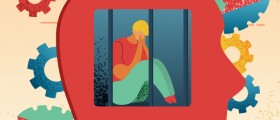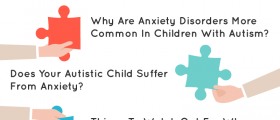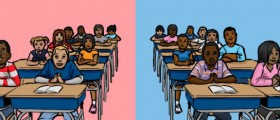
Mental Disorders in America
Mental disorders are relatively common in the United States with a little less than 27% of people being affected. Although they appear to be widespread, most mental disorders are contained within around 6% of individuals who are considered to be seriously impacted by one or more psychological problems. Mental disorders in the United States are diagnosed based on the DSM –IV, the Diagnostic and Statistical Manual of Mental Disorders, the fourth edition.
List of Disorders
Mood disorders are a kind of disability that includes depression and bipolar disorder. For many people mood disorders are being diagnosed around the age of 30, and a little over 20 million individuals in the United States are considered to be depressed or bipolar. Suicide is a very common occurrence among the people affected by a mood disorder, with over 90% of those who take their own lives having some form of mental disability, usually depression or substance abuse. Finally, mood disorders are more prevalent in women than men.
In addition, schizophrenia is another kind of psychological disability that affects many Americans. About 2.4 million individuals suffer from it, both men and women equally, although the symptoms usually start earlier in men.
Anxiety disorders, another very prevalent psychological kind of problems, cover a wide range of health issues, and some of them include a panic disorder. Panic disorder is present in 6 million people living in the U.S., and it is often present with other psychological disorders, with the onset usually during the young adulthood. Individuals suffering from obsessive-compulsive problems, another kind of anxiety disorder, are usually affected starting at an early age and end up making a population of about 2 million.
Another kind of disturbance common in North America is eating disorder. The onset of an eating disorder is usually in puberty, it is much more prevalent in girls than boys, and it puts those girls at a higher risk of mortality by the early adulthood than the general counterpart population.
A widespread disorder among school children that lasts well into the adulthood is ADHD, which becomes evident usually when a child enters school.
One more disorder that is present among the same population is autism, which affects far more males than females.
Lastly, Alzheimer’s disease is a mental disorder that mostly impacts seniors, about 4 million of them living in the United States, and its incidence has been on the rise in the past couple of decades.
Mental Disorders in Children
There are many children living in the United States who are suffering from one or more mental disorders. Recent studies have shown some alarming rates of the prevalence of ADHD, such as that 2 million school children are affected. Given the number of schools and class sizes, these data mean that there is one child per class that is suffering from this problem. Children who are diagnosed with ADHD have trouble focusing their attention on a task at hand, and often have behavioral problems manifested through disobedience or restlessness.
Further, when it comes to autism, which affects over 3 individuals out of 1000, children that are impacted by it have very little or no social skills, are extremely shy, and usually have impaired motor and language skills.
Bipolar disorder is another psychological impairment that not only impacts adults but can develop in children as well. Young bipolar individuals have severe mood swings, ranging from deep depression to manic hyperactivity, which impairs their ability to function on a daily basis.
Data on conduct disorder, another behavioral problem in children and teenagers, show a lot variability, possibly affecting anywhere between 1 and 4 percent of children, whereas oppositional defiant disorder, also manifested through serious misbehaving, affects anywhere between 1 and 6 percent of individuals of the same population.
In addition, depression is not a disorders characteristic only for adults. Many school age children and teenagers, around 1 out of every 10, are frequently prone to depressive episodes at some point in their lives.
A type of psychological problem that can affect children just as much as adults is post-traumatic stress disorder, which manifests its signs a couple of months after having witnessed or survived a horrifying event, such as a natural catastrophe, death, or abuse. In the United States, around 5 million people, children and teenagers included, show signs of the post-traumatic stress disorder.
Finally, substance abuse is a very widespread psychological problem among teenagers that can leave serious consequences moving on onto the adulthood. Statistics on drug use at an early age show that there are almost 20 million Americans over the age of 12 using illegal, recreational drugs. Within the same population, almost 80 million people report smoking cigarettes on a daily basis, while almost 15 million disclosed that they were regular users of marijuana. There are many prescription medications that teenagers report using as recreational drugs as well.

















Your thoughts on this
Loading...